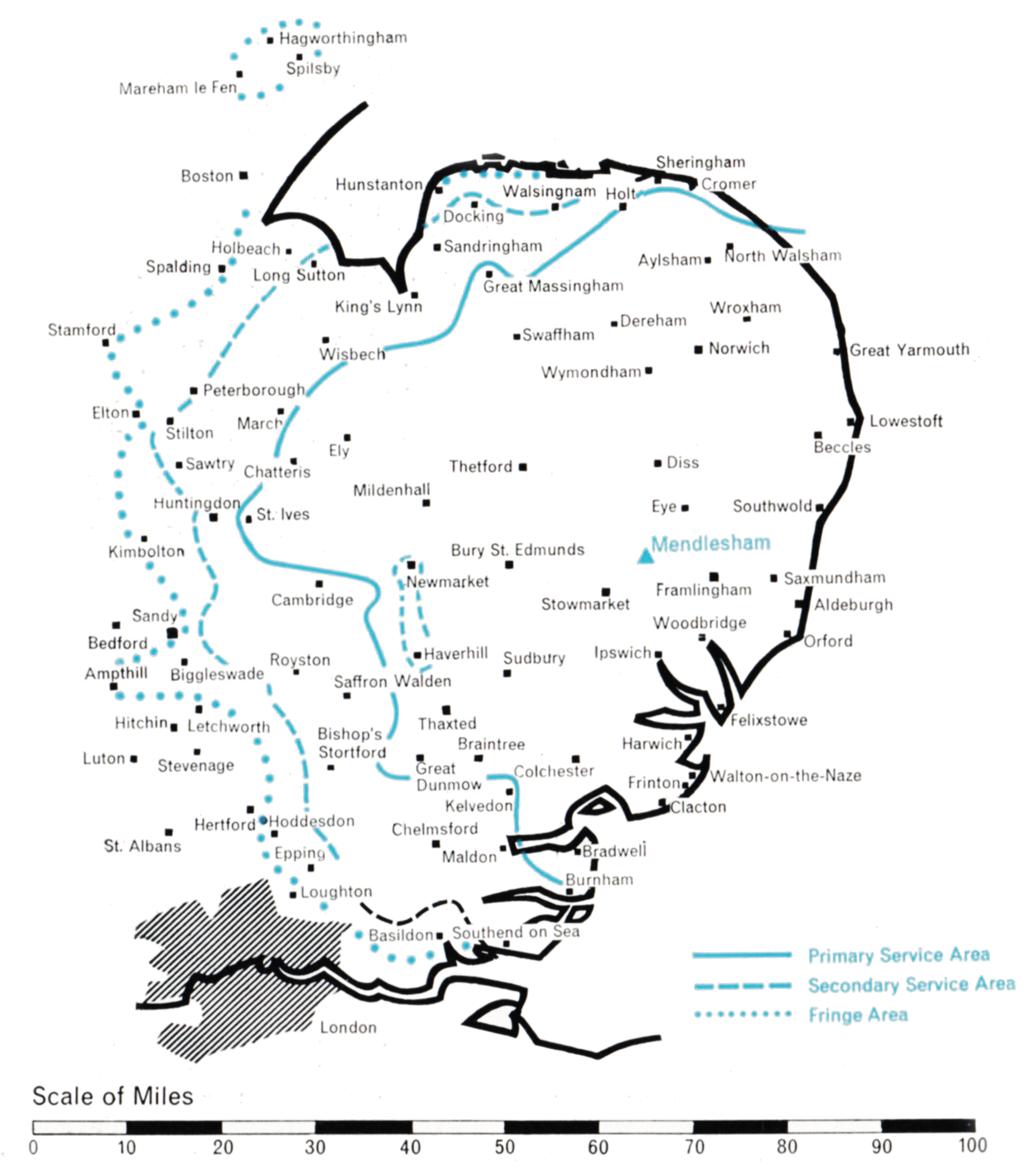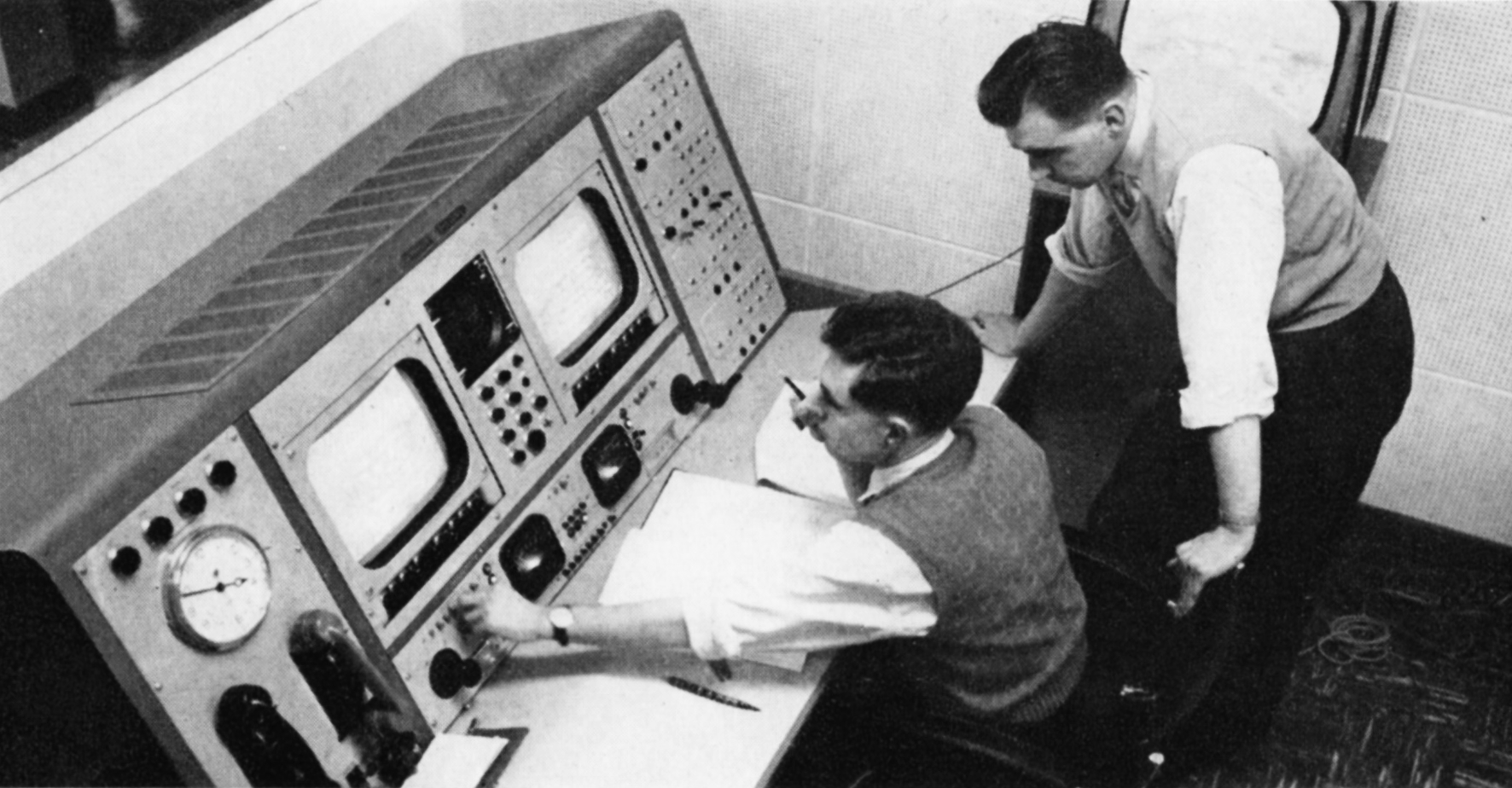- Population within measured contours: Primary 1.22 mn, Secondary 0.96 mn, Fringe 0.37 mn. Total 2.55 mn.
- Channel: Band III Channel 11 (horizontally polarised)
- Vision Carrier Frequency: Nominal 204.75 Mc/s. Actual 204.74325 Mc/s
- Sound Carrier Frequency: Nominal 201.25 Mc/s. Actual 201.23 Mc/s
- Effective Radiated Power: Vision 200 kw maximum. Sound 50 kw maximum.
- Power of Transmitters: Vision (peak white) 2 x 5 kW. Sound (carrier) 2 x 1.25 kW
- Heights above sea level: Site 200 ft. Mean aerial 1,150 ft.
- Location: 1° 6′ 32″ E, 52° 14′ 3″ N.
Mendlesham (Channel 11)
Company: Anglia Television
The geographically large but not densely populated area of East Anglia which this station is designed to serve is of unusual interest to the technical planner. It is largely flat and circular in shape, with a diameter of about eighty miles. At first sight it seems to present an almost ideal case for service by an uncomplicated high-power station located at the geographical centre, radiating its power omnidirectionally. As so often happens, the simple approach could not be applied. The possibility of causing interference to West German viewers in the established service area of the Langenberg station and to French viewers of the Amiens station demanded that the power radiated over a prescribed south-easterly arc must not exceed about 15 kW. Other complications included the need to prevent interference in the service area of Chillerton Down, which uses the same channel, and the need to observe the principle that ITA and BBC stations should be adjacently sited.
Thus, to secure adequate service to the coastal areas of Suffolk and Essex, the site for the station had to be displaced well to the south-east of the geographical centre of the required service area and, incidentally, far from the BBC Norwich Band I station which serves much of the same general area. The Television Advisory Committee confirmed the Authority’s conclusion that adjacent siting could not be followed in this instance and that the best site for the ITA station was at Mendlesham, about fifteen miles north-west of Ipswich. The towns of Ipswich, Colchester, Felixstowe and Harwich would then be close enough to the station to be well served, despite the relatively low power radiated in their direction.
To compensate for the displacement of the station from the natural geographical centre it was necessary for the power radiated towards the west and north to approach 200 kW. Again, because of the very low height of the Mendlesham site, 210 ft. above sea level, a 1,ooo ft. mast was considered technically appropriate. This was the highest television mast to be constructed in Europe and the first of five of the same height subsequently used at other ITA stations. The building of the station began early in 1959, and after some corrective adjustments to the aerial power-feeding networks the station began programme service on 27th October 1959.


